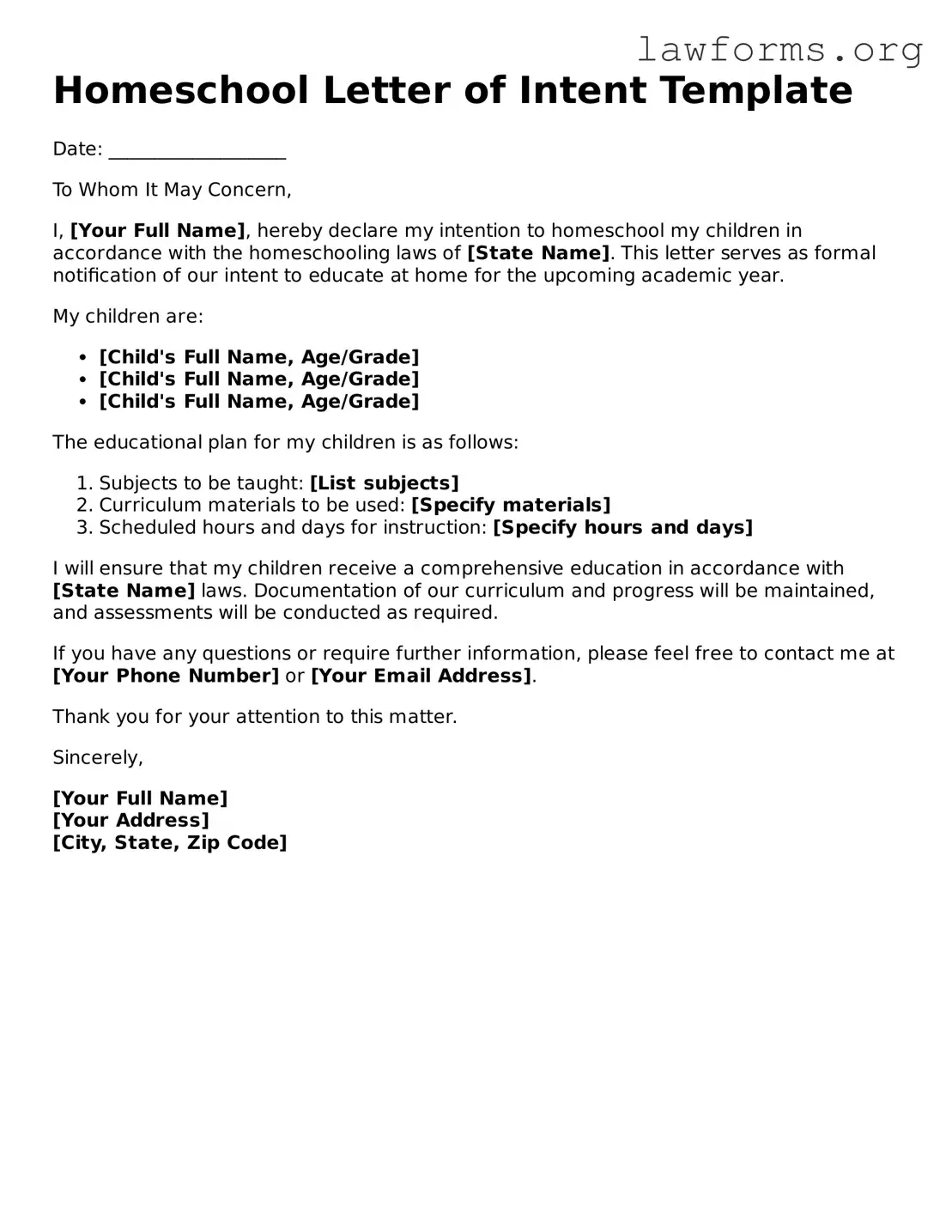Valid Homeschool Letter of Intent Form
The Homeschool Letter of Intent is a formal document submitted to local education authorities to notify them of a family's decision to homeschool their children. This form serves as an essential first step in the homeschooling process, ensuring compliance with state regulations. Understanding its purpose and requirements can help families navigate their educational choices effectively.
To get started, fill out the form by clicking the button below.
Customize Document Online
